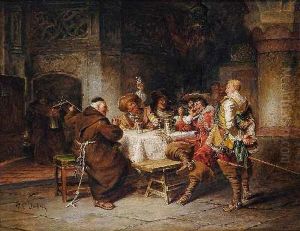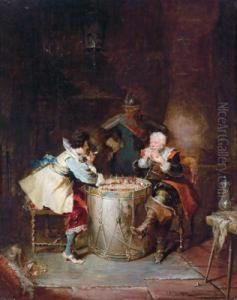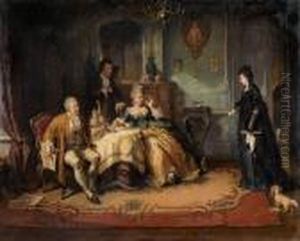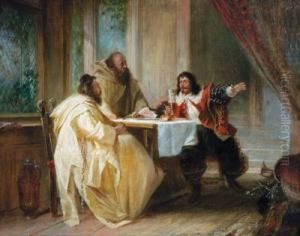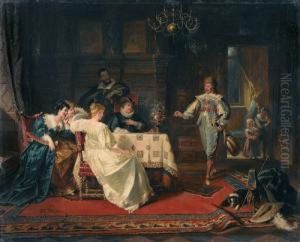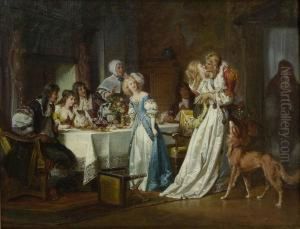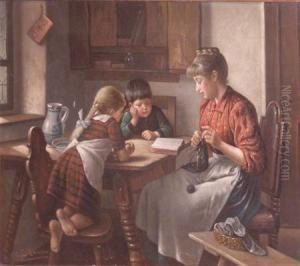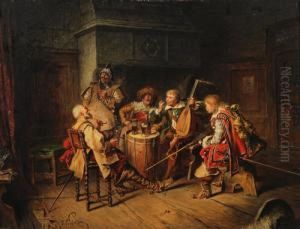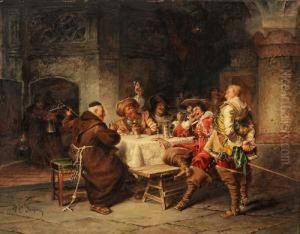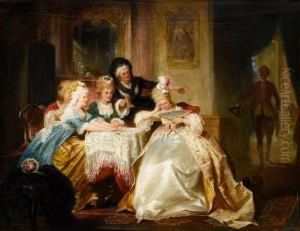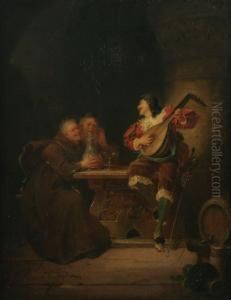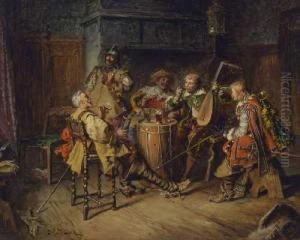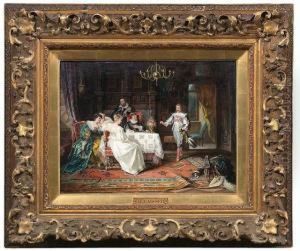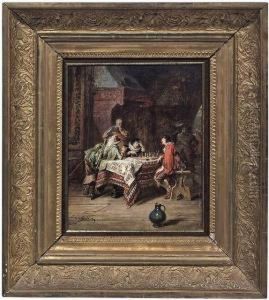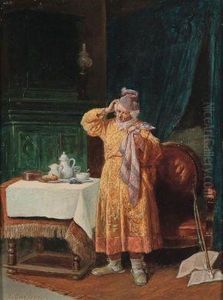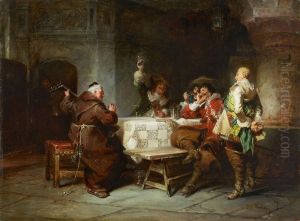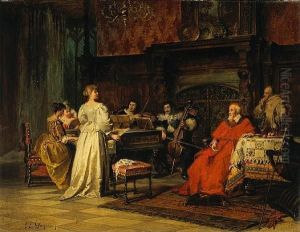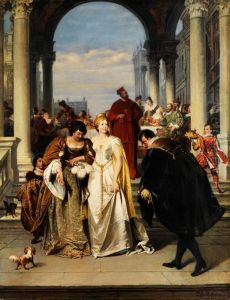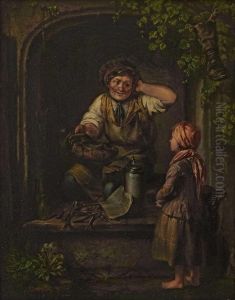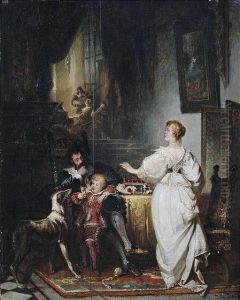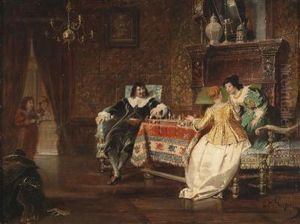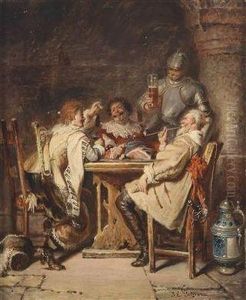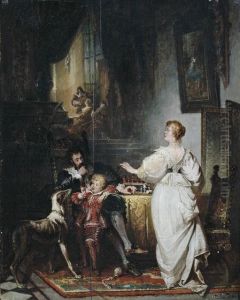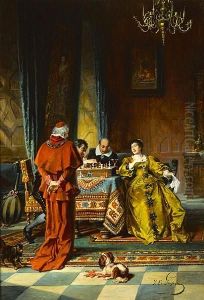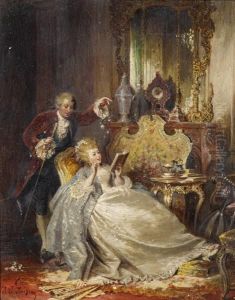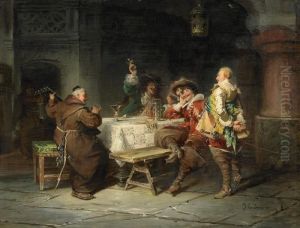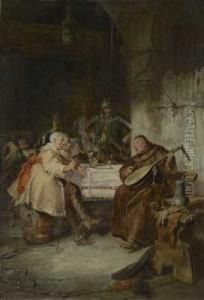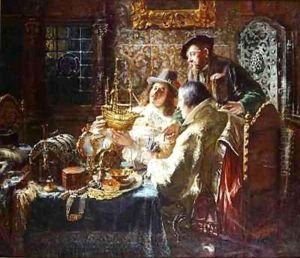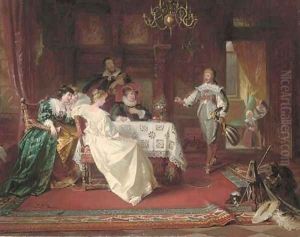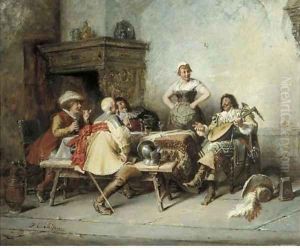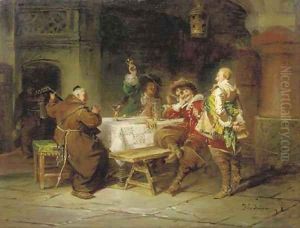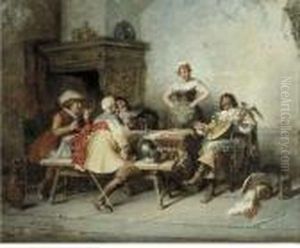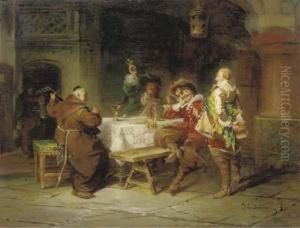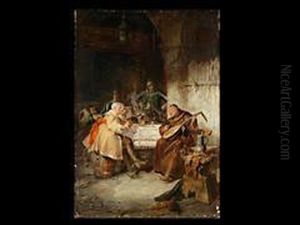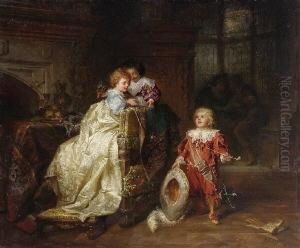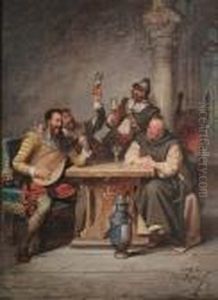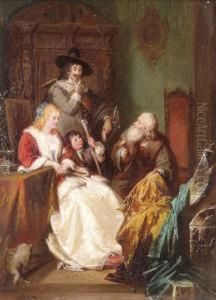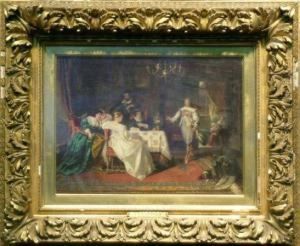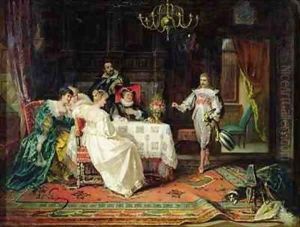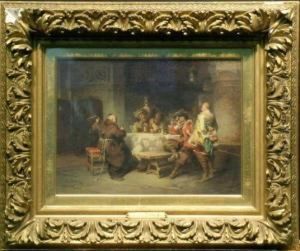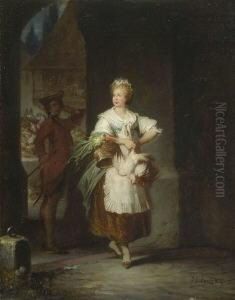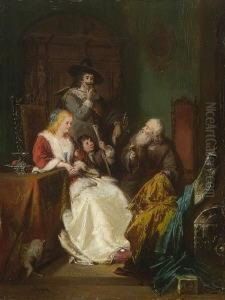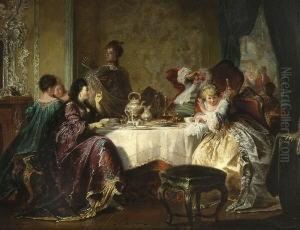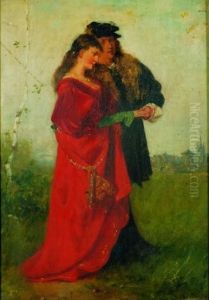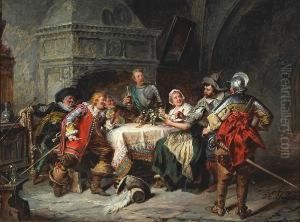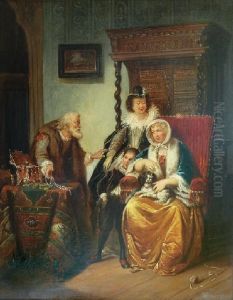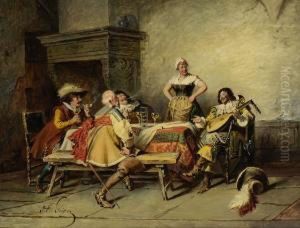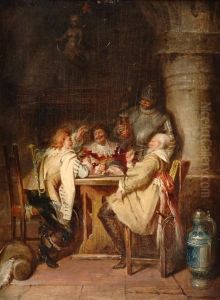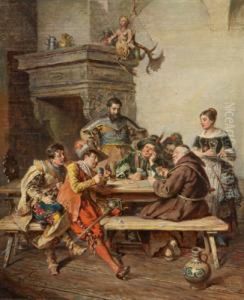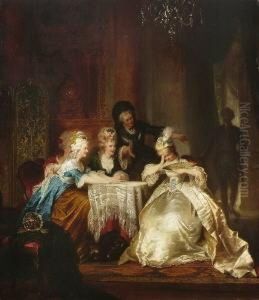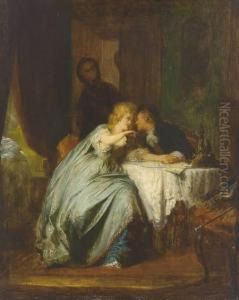Jacob Emmanuel Gaisser Paintings
Jacob Emmanuel Gaisser, also known as Emil Gaisser, was a German genre painter born on January 4, 1825, in Ehingen, Kingdom of Württemberg. He is known for his detailed and lively scenes of everyday life, often infused with humor and keen observation.
Gaisser began his artistic education at the Stuttgart Art School and later continued his studies at the Academy of Fine Arts Munich, which was a major center for art and culture in 19th-century Germany. His instructors included renowned artists who influenced his style and technique.
During his career, Gaisser became associated with the Düsseldorf school of painting, which was characterized by its finely detailed, narrative style. Although Gaisser never became a leading figure in the German art scene, his work enjoyed popularity, and he participated in various exhibitions, including those at the Munich Glass Palace, an important venue for contemporary art at the time.
Gaisser's genre paintings typically depicted scenes from bourgeois life, festivals, and marketplaces, as well as humorous vignettes of village life. His approach to genre painting was traditional, emphasizing storytelling and the depiction of characters in a realistic manner. His use of color and his ability to capture the nuances of light and shadow added to the vivacity of his scenes.
Over the years, Gaisser's paintings have been collected by various institutions and private collectors. However, he is not as widely recognized today as some of his contemporaries. Despite this, his works provide a valuable glimpse into the social dynamics and cultural atmosphere of 19th-century Germany.
Jacob Emmanuel Gaisser passed away on March 20, 1899, in Düsseldorf, leaving behind a legacy of genre painting that captures the spirit and the daily life of his time.
